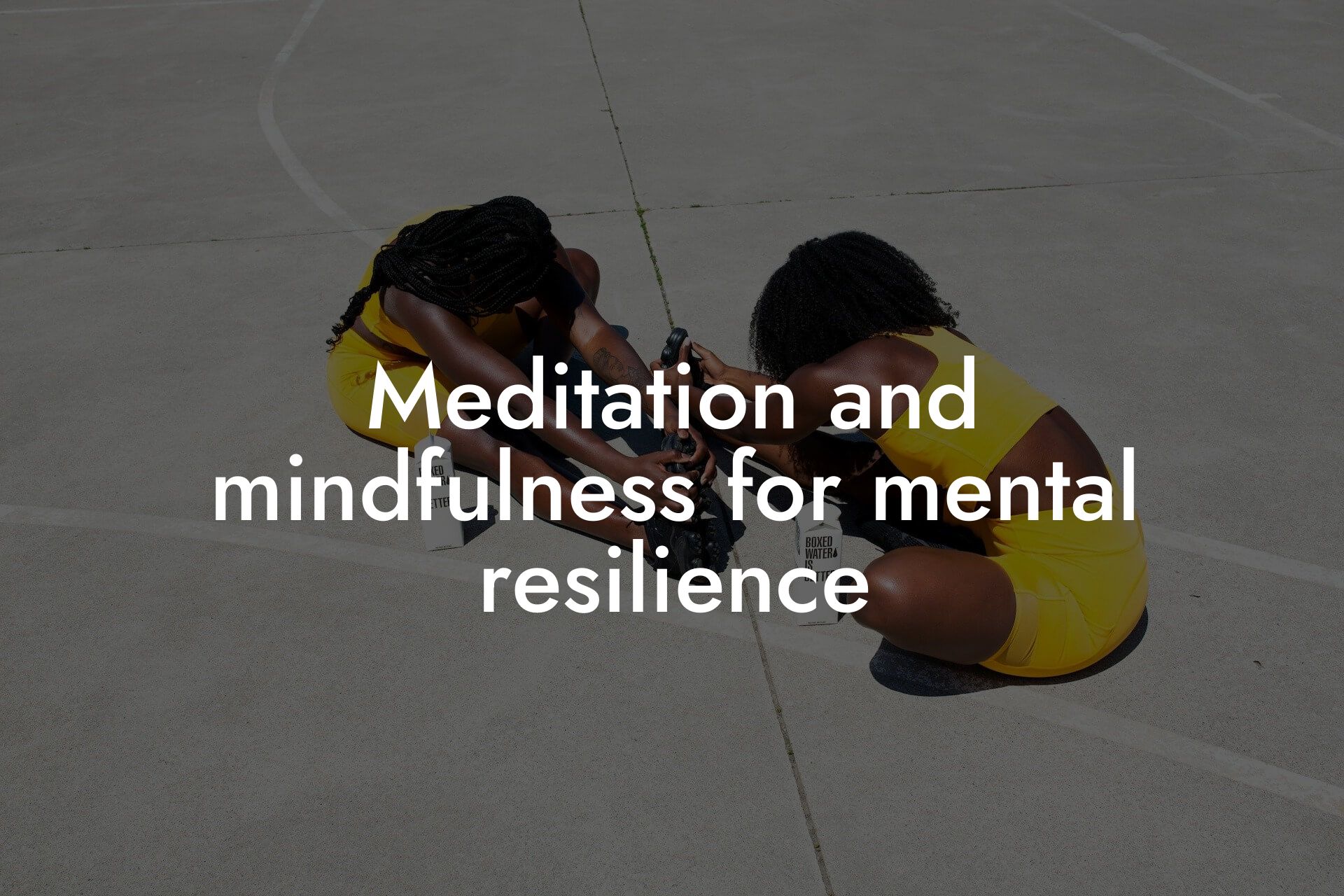Body Dysmorphic Disorder (BDD) is a mental health condition characterized by an obsessive preoccupation with a perceived flaw in one's appearance. This flaw may be minor or even imperceptible to others, but to the individual, it can be a source of significant distress and anxiety. BDD can affect anyone, regardless of age, gender, or background, and it is estimated that approximately 1 in 50 people suffer from the condition.
Table of Contents
The Signs and Symptoms of BDD
Individuals with BDD often exhibit a range of signs and symptoms, including:
• Preoccupation with a perceived flaw in their appearance, such as skin, hair, or body shape
• Frequent checking of the perceived flaw in mirrors or other reflective surfaces
• Repeatedly seeking reassurance from others about their appearance
• Engaging in compulsive behaviors, such as excessive grooming or skin picking, in an attempt to "fix" the perceived flaw
• Avoiding social situations or activities due to feelings of shame or embarrassment about their appearance
• Feeling anxious or depressed about their appearance
The Impact of BDD on Daily Life
BDD can have a significant impact on an individual's daily life, relationships, and overall well-being. Some common consequences of BDD include:
• Social isolation and withdrawal
• Decreased productivity and performance at work or school
• Strained relationships with friends and family
• Decreased self-esteem and confidence
• Increased anxiety and depression
The Link Between BDD and Fitness
For high-earning professionals interested in their physical appearance, body fat, physique, and bone density, BDD can be a particularly challenging condition. The pressure to maintain a certain physical appearance can exacerbate BDD symptoms, leading to an unhealthy obsession with fitness and exercise. This can result in:
• Overtraining and burnout
• Unhealthy eating habits and disordered eating
• Unrealistic expectations and disappointment
• A negative impact on overall mental and physical health
Overcoming BDD: Strategies for Success
While BDD can be a challenging condition to overcome, there are several strategies that can help individuals manage their symptoms and improve their overall well-being. These include:
• Cognitive-behavioral therapy (CBT): A type of therapy that helps individuals identify and challenge negative thought patterns and behaviors
• Exposure and response prevention (ERP): A type of therapy that involves gradually exposing individuals to situations that trigger BDD symptoms, while preventing them from engaging in compulsive behaviors
• Mindfulness and self-compassion: Practicing mindfulness and self-compassion can help individuals develop a more positive body image and reduce BDD symptoms
• Support groups: Joining a support group can provide individuals with a sense of community and connection, as well as access to resources and guidance
The Role of DEXA Scans in Overcoming BDD
DEXA scans can play a valuable role in overcoming BDD by providing individuals with an accurate and objective assessment of their body composition. This can help individuals:
• Develop a more realistic and positive body image
• Identify areas for improvement and set achievable fitness goals
• Track progress and celebrate successes
• Reduce anxiety and uncertainty about their body composition
Body Dysmorphic Disorder is a complex and challenging condition, but it is not impossible to overcome. By understanding the signs and symptoms of BDD, the impact it can have on daily life, and the strategies for success, individuals can take the first steps towards recovery. Additionally, incorporating DEXA scans into their fitness routine can provide individuals with a valuable tool for tracking progress and achieving their goals. At Tano Performance Group, we are committed to providing high-earning professionals with the information and resources they need to overcome BDD and achieve optimal physical and mental health.
Seeking Help and Support
If you or someone you know is struggling with BDD, it is essential to seek help and support. Talk to a mental health professional, join a support group, or reach out to a trusted friend or family member. Remember, overcoming BDD takes time, patience, and support, but it is possible to live a happy, healthy, and fulfilling life.
Frequently Asked Questions
What is body dysmorphia?
Body dysmorphic disorder (BDD) is a mental health condition characterized by an excessive preoccupation with a perceived flaw in one's appearance, which can lead to significant distress and impairment in daily life. People with BDD may obsess over minor or imagined defects, such as skin imperfections, hair loss, or body shape, and may engage in repetitive behaviors like mirror checking, skin picking, or excessive exercise in an attempt to "fix" their perceived flaws.
What are the common symptoms of body dysmorphia?
Common symptoms of body dysmorphia include: preoccupation with a perceived flaw in appearance; repetitive behaviors like mirror checking, skin picking, or excessive exercise; avoidance of social situations due to feelings of shame or embarrassment; feelings of anxiety, depression, or low self-esteem; and significant distress or impairment in daily life.
How common is body dysmorphia?
Body dysmorphic disorder is estimated to affect approximately 1% of the general population, although it's believed that many cases go undiagnosed. It's more common among individuals with a history of anxiety, depression, or obsessive-compulsive disorder (OCD).
What causes body dysmorphia?
The exact causes of body dysmorphic disorder are not fully understood, but it's thought to involve a combination of genetic, environmental, and psychological factors. Potential triggers include: childhood trauma, bullying, or teasing; societal pressure to conform to beauty standards; and underlying mental health conditions like anxiety or depression.
How is body dysmorphia diagnosed?
A mental health professional, such as a psychologist or psychiatrist, can diagnose body dysmorphic disorder through a comprehensive evaluation, including: a thorough physical examination to rule out underlying medical conditions; a psychological assessment to identify symptoms and behaviors; and a review of the individual's medical and mental health history.
How is body dysmorphia treated?
Treatment for body dysmorphic disorder typically involves a combination of psychotherapy, medication, and lifestyle changes. Cognitive-behavioral therapy (CBT) is a effective form of psychotherapy that helps individuals identify and challenge negative thought patterns and behaviors. Medications like selective serotonin reuptake inhibitors (SSRIs) may be prescribed to help manage symptoms of anxiety and depression. Lifestyle changes, such as regular exercise, healthy eating, and stress management, can also help alleviate symptoms.
Can body dysmorphia be cured?
While body dysmorphic disorder is a chronic condition, it is treatable, and many individuals are able to manage their symptoms and improve their quality of life with appropriate treatment and support. However, it's important to note that BDD is a complex condition, and relapses can occur. Ongoing therapy and support are often necessary to maintain progress and prevent relapse.
How does body dysmorphia affect daily life?
Body dysmorphic disorder can significantly impact daily life, causing individuals to: avoid social situations or activities due to feelings of shame or embarrassment; spend excessive amounts of time on appearance-related activities like grooming or exercise; experience anxiety, depression, or low self-esteem; and have difficulty maintaining relationships or performing daily tasks due to preoccupation with appearance.
How does body dysmorphia affect relationships?
Body dysmorphic disorder can strain relationships with family and friends, as individuals may become withdrawn, irritable, or critical of others. They may also have difficulty forming intimate relationships due to feelings of shame or embarrassment about their appearance. Support from loved ones is crucial in helping individuals with BDD to seek treatment and manage their symptoms.
Can body dysmorphia be prevented?
While it's not possible to completely prevent body dysmorphic disorder, promoting a positive body image and self-esteem from an early age can help reduce the risk of developing BDD. This can involve: encouraging healthy habits like regular exercise and healthy eating; promoting self-acceptance and self-compassion; and challenging unrealistic beauty standards and societal pressure to conform.
How does body dysmorphia affect mental health?
Body dysmorphic disorder is often comorbid with other mental health conditions like anxiety, depression, and obsessive-compulsive disorder (OCD). It can also contribute to the development of suicidal thoughts or behaviors in severe cases. It's essential to address underlying mental health conditions and to seek professional help if you're struggling with BDD.
How does body dysmorphia affect physical health?
Body dysmorphic disorder can have negative impacts on physical health, including: skin problems due to excessive skin picking or scratching; hair loss due to excessive hair pulling or styling; and musculoskeletal problems due to excessive exercise or repetitive behaviors. It's essential to prioritize physical health and to seek medical attention if you're experiencing any physical symptoms related to BDD.
Can body dysmorphia be treated with medication?
Medications like selective serotonin reuptake inhibitors (SSRIs) can be effective in managing symptoms of body dysmorphic disorder, particularly those related to anxiety and depression. However, medication should be used in conjunction with psychotherapy and lifestyle changes to address the underlying causes of BDD.
How long does it take to recover from body dysmorphia?
Recovery from body dysmorphic disorder is a unique and individualized process, and it can take time. With appropriate treatment and support, individuals can begin to experience improvements in their symptoms and quality of life within several months to a year. However, ongoing therapy and support are often necessary to maintain progress and prevent relapse.
Can body dysmorphia be treated with therapy alone?
Yes, therapy can be an effective treatment for body dysmorphic disorder, particularly cognitive-behavioral therapy (CBT). CBT helps individuals identify and challenge negative thought patterns and behaviors, and can be used in conjunction with other forms of therapy, such as acceptance and commitment therapy (ACT) or dialectical behavior therapy (DBT).
How can I support a loved one with body dysmorphia?
Supporting a loved one with body dysmorphic disorder involves: educating yourself about the condition; being patient, understanding, and non-judgmental; encouraging them to seek professional help; and helping them to develop a support network. It's also essential to take care of your own mental health and to seek support if you need it.
Is body dysmorphia a sign of vanity?
No, body dysmorphic disorder is not a sign of vanity. It's a serious mental health condition that can cause significant distress and impairment in daily life. Individuals with BDD are not simply concerned with their appearance; they are often consumed by a perceived flaw that they believe is a major defect.
Can body dysmorphia be treated with self-help strategies?
While self-help strategies like mindfulness, self-compassion, and relaxation techniques can be helpful in managing symptoms of body dysmorphic disorder, they should not be relied upon as the sole treatment. Professional help from a mental health expert is often necessary to address the underlying causes of BDD and to develop a comprehensive treatment plan.
How does body dysmorphia affect self-esteem?
Body dysmorphic disorder can significantly impact self-esteem, leading to feelings of shame, embarrassment, and low self-worth. Individuals with BDD may believe that they are flawed or defective, and that their appearance is a reflection of their worth as a person. Challenging these negative beliefs and promoting self-acceptance and self-compassion is an essential part of treatment.
Can body dysmorphia be treated with lifestyle changes?
Lifestyle changes like regular exercise, healthy eating, and stress management can be helpful in managing symptoms of body dysmorphic disorder. However, these changes should be made in conjunction with professional help and therapy to address the underlying causes of BDD.
How does body dysmorphia affect body image?
Body dysmorphic disorder can significantly distort body image, leading individuals to perceive themselves as flawed or defective. This can result in a negative body image, which can contribute to feelings of shame, embarrassment, and low self-esteem. Challenging these negative beliefs and promoting a positive body image is an essential part of treatment.
Can body dysmorphia be treated with online therapy?
Yes, online therapy can be an effective treatment for body dysmorphic disorder, particularly for individuals who have difficulty accessing in-person therapy. Online therapy can provide convenient and flexible access to professional help, and can be used in conjunction with in-person therapy or self-help strategies.
Here are some related articles you might love...
- How to balance work, fitness, and personal life
- Meditation and mindfulness for mental resilience
- How physical fitness impacts cognitive performance
- Stress management techniques for busy professionals
- The impact of physical appearance on self-esteem
- Goal setting for physical and mental well-being
- How to stay motivated during your fitness journey
- The role of exercise in preventing burnout
- The connection between physical health and mental clarity
Zak Faulkner
Zak Faulkner is a leading authority in the realm of physical health and body composition analysis, with over 15 years of experience helping professionals optimise their fitness and well-being. As one the experts behind Tano Performance Group, Zak has dedicated his career to providing in-depth, science-backed insights that empower clients to elevate their physical performance and overall health.
With extensive knowledge of DEXA technology, Zak specializes in delivering comprehensive body assessments that offer precise data on body fat, muscle mass, bone density, and overall physique. His expertise enables individuals to make informed decisions and achieve their fitness goals with accuracy and confidence. Zak’s approach is rooted in a deep understanding of human physiology, combined with a passion for helping clients unlock their full potential through personalised strategies.
Over the years, Zak has earned a reputation for his commitment to excellence, precision, and client-focused service. His guidance is trusted by top professionals who demand the best when it comes to their health. Whether advising on fitness programs, nutritional strategies, or long-term wellness plans, Zak Faulkner’s insights are a valuable resource for anyone serious about taking their health and fitness to the next level.
At Tano Performance Group, Zak continues to lead our Content Team revolutionising how professionals approach their physical health, offering unparalleled expertise that drives real results.




